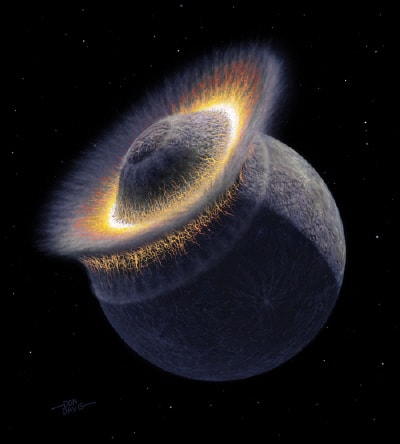A team of astronomers in the US has confirmed the existence of two new moons orbiting around Pluto. The moons, dubbed rather prosaically P1 and P2, were initially detected by the Hubble Space Telescope last year and are the first objects to be discovered around the planet since its first moon, Charon, was found nearly 30 years ago. The moons are estimated to have diameters of between about 48 and 165 kilometres and are therefore much smaller than Charon, which is around 1200 km across. The discovery also makes Pluto the first Kuiper-belt object to have more than one satellite (Nature 439 943).

Pluto is the furthest planet in our solar system and lies in a vast band of small, icy bodies beyond Neptune called the Kuiper belt. Charon was discovered in 1978 and although some astronomers suspected that Pluto could have other, smaller, moons, none were found until now because of the difficulty in detecting objects so far away from Earth. The Hubble Space Telescope Advanced Camera for Surveys instrument detected the two new candidate moons in May last year and a team led by Hal Weaver at John Hopkins University and colleagues has now confirmed their existence by reanalysing images taken at this time and in 2002.
Based on measurements of the fraction of visible sunlight that the objects reflect into space, the astronomers have calculated that P1 has a diameter of between around 60 to 165 km and that P2 is about 20% smaller. Although definite orbits have not yet been drawn up, Weaver and colleagues say that both objects orbit Pluto at at least twice the distance Charon does — at around 65,000 km for P1 and 49,000 km for P2. Moreover, the two moons have orbital periods of about 38 and 25 days respectively, in contrast to Charon, which has an orbital period of just six days.
The researchers suggest that these new moons were created at the same time as Charon when another large body collided into Pluto (Nature 439 946). The collision ejected debris into orbit around the planet that then coalesced together under its own gravity to form the moons — the same way as our own Moon is thought to have formed. The team adds that the discovery of P1 and P2 implies that moons around Kuiper-belt objects may be quite common and that similar objects should be found as imaging techniques become more sophisticated. Indeed, Pluto itself might even have more moons.
The International Astronomical Union will now decide on real names for the two objects.




